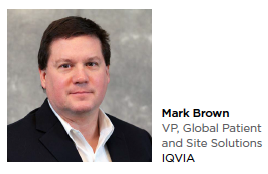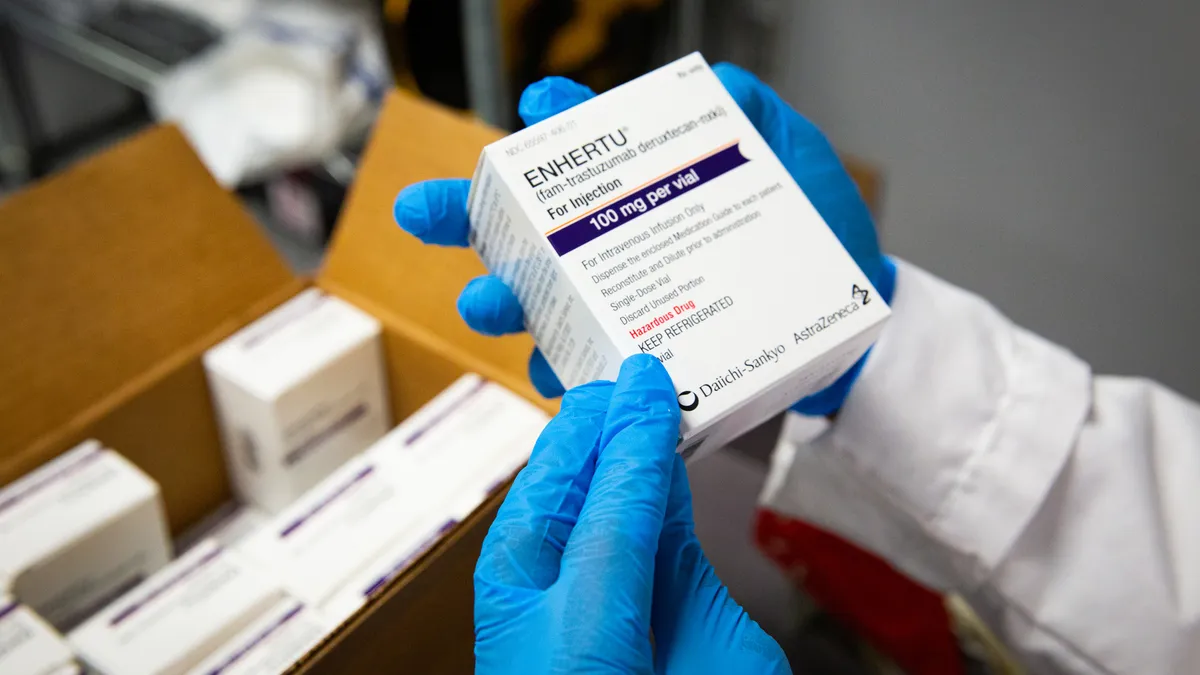Five ways real-world data adds value in the drug development and commercialization lifecycle.
 The drug development industry has access to vast stores of real-world data (RWD) that reflect the healthcare journeys of millions of patients across the globe. And the scale of these assets grows exponentially every day.
The drug development industry has access to vast stores of real-world data (RWD) that reflect the healthcare journeys of millions of patients across the globe. And the scale of these assets grows exponentially every day.
Every time a patient visits their physician, hospital, or pharmacy, data is captured in electronic medical records (EMR), hospital reports, and prescription data. As consumers, patients can also generate verifiable clinical data from wearable devices, that track their mobility, heart rate, exercise, sleep habits, and other personal information. These data sets can bring measurable value to pharma companies throughout the drug development and commercialization process.
This data only holds value if pharma companies leverage the support of industry partners and leading-edge analytics technology. With the right analytics, Sponsors can uncover granular insights to inform their drug development and commercialization strategies that can ultimately result in better patient outcomes.
Patient Journey Analyses
Before trials even begin, effective analysis of RWD can help developers understand specifics around the patient’s disease journey, from pre-diagnosis through treatment experiences and health outcomes. These insights can help them identify unmet needs and inform which drugs to develop to address those specific needs.
While many sponsors already conduct patient journey analyses, these methods are often too generalized. The rarity of a condition, subpopulation variation, patient location, and differences in treatment patterns can all impact the effectiveness of patient journey analytics, leaving most patients outside of a one-size-fits-all profile.
However, when companies combine feedback from patients and introduce artificial intelligence and machine learning (AI/ML) into their data analysis process, they can parse out more defined sub-population experiences that can help hone their protocols and recruiting strategies to accelerate trial timeline. And once a drug is approved, these insights enable more purposeful conversations with treating physicians and better identify patients at high risk of the disease so providers can provide prompt and appropriate interventions.
Accelerated Recruiting
Once developers move into Phase 3 trials, analyzing secondary data assets, including claims, patient registry information, and EMRs, can help sponsors and sites identify patients and treating physicians to build their strategies around those locales. This data can reduce time, cost, and uncertainty, to ensure sites have a high probability of meeting their recruiting goals.
In the most advanced analytics applications for recruiting, sponsors and sites can use inclusion/exclusion criteria to locate specific patient profiles. The results can be game-changing for rare disease and targeted therapy trials, where patient populations are difficult to find.
For example, IQVIA’s team worked with a sponsor on an Irritable Bowel Disease study in the United States, where an initial analysis showed two sites each had more than 350 patients diagnosed with Crohn’s Disease, a key criteria for the study. A deep dive of existing medical records and claims data determined which of these patients had never used a biologic, which was another inclusion criteria. That caused the number of potential patients to plummet, leaving one site with more than 100 patients and the other with just 16. Without the analytics, the sponsor likely would have opened sites at both facilities — and missed their recruiting goals.
Diversity, Equity, and Inclusion in Patient Populations
Advanced insights and analytics can also be used to meet diversity, equity, and inclusion (DEI) goals for trial populations, which has become a top priority for sponsors and regulators.
This approach was used across COVID-19 vaccine and treatment studies, where sponsors demonstrated diversity in massive trial populations on accelerated timelines. On many of these projects, IQVIA’s patient recruitment and enablement experts worked with sponsors to create and test hundreds of ads to target specific demographics. Once ads were in market, the team tracked response rates via live monitoring dashboards that showed how many people viewed an ad, what percentage clicked on it, and how response rates broke down by age, gender, and ethnicity which allowed IQVIA to optimize the recruitment strategy.
In one case, a sponsor used the data to support a decision to end recruiting young Caucasian candidates early (or at a midpoint) in the trial, ensuring Black and LatinX populations had more opportunities to participate. The sponsor was still able to meet their recruiting goals within the expected timeline while exceeding diversity goals for patient populations.
Accelerated Approval and Label Expansions
Regulators have been signaling their interest in RWD for years, and we’ve seen several examples where sponsors have used RWD to secure accelerated approvals and label expansions. These include the approval of Bavencio1, a treatment for a rare and lethal skin cancer, in which sponsors used EMR records of similar patients as context to interpret results from their single-arm trial. It’s yet another example of how a well-planned RWD strategy can continue to deliver strategic value long after initial trials are complete.
Post-Market Safety Studies
Once a drug is approved, the data leveraged during early planning and research can add value in post-market observational studies to trace product safety and effectiveness over many years.
Observational studies are non-interventional studies that leverage existing RWD captured during routine care visits. Using real-world patient data for these studies can be an inexpensive, patient-centric way to demonstrate the real-world impact of marketed products without the cost and complexity of randomized clinical trials (RCTs). But they must be planned during research to ensure the endpoints of interest will be collected during standard physician visits to avoid the need for study-specific follow-up visits.
Using RWD lowers study costs and eliminates the added burden for patient participation, which is critical as these studies can go on for years. Once sponsors have the permission of patients to access this information through EMR systems, they can monitor behavior and outcomes at various stages of their disease.
For example, a post-market safety study for a new oncology drug might begin with EMR data collected monthly during initial follow-up visits, followed by data gathered at annual site follow- ups during the next one to five years. Then the study can switch to monitoring data collected during wellness visits and unrelated HCP interactions for another five to 15 years.
In these studies, patients can participate, even if they move away or change insurance status. It requires almost no additional interaction once they agree to provide access to their data during the original clinical trial.
Patients Hold the Key
Most sponsors recognize RWD and analytics technologies must be woven into their clinical and commercial strategies, but older data models and limited capabilities can thwart their progress. These outdated capabilities include having siloed data systems that trap individual clinical and commercial data sets in separately, making it difficult to analyze them collaboratively for deeper insights.
Even when data sets are combined, the lack of analytics technologies means the analysis is often limited in scope, leading to a narrow set of insights that fail to explore the unique experiences of subpopulations within the broader landscape.
Sponsors are also limited by rules about patients’ expectations for privacy. Data privacy and access are among the most significant challenges they face when attempting to leverage the full power of Big Healthcare Data. Regulators closely control when, where, and how sponsors can access patient data, and if they expose a patient’s identity, even inadvertently, it can create significant risks.
Patients are also gaining more control over their data and who is allowed access to it. That means a data strategy must now include the patient as a key stakeholder. Regulations including HIPAA and the EU’s General Data Protection Regulation (GDPR) require patient consent as a condition of reviewing and using patient data and that its use must adhere to anonymization rules that protect their identity.
End-to-End Data Strategy
Advances in technology and analytics enable RWD to be gathered as part of routine care and analyzed more rapidly for a wide range of decisions at every point in the drug lifecycle. These data may be derived from various sources, including EMRs, laboratories, pharmacies, healthcare insurance claims, product and disease registries, and consumer devices.
For sponsors to make the most of this goldmine of data from EMRs, they need to think about how they will engage and inform patients as part of their strategy and use these assets to inform their development and commercial decisions. The most effective data strategies are woven into the development plan from the beginning, with data assets and technologies aligned to clinical and commercial goals. This upfront planning ensures the data collected will add value at every stage of the process and prevents the risk of critical data getting lost due to poor planning or insufficient informed consent.
IQVIA can help guide sponsors through the data-driven strategic transformation by bringing a combination of unparalleled, clinically rich data, advanced analytics, and human expertise to every step in the drug development and commercialization process. When sponsors leverage this combination of data, technology, and expertise, they are able to accelerate study starts, shorten time to market, prove the safety and efficacy of their products, and maximize uptake and label expansions once they come to market.
These aren’t just nice-to-have improvements. In today’s highly competitive life sciences marketplace, connected data must be part of the evidence ecosystem, to support smarter healthcare decisions that improve outcomes. IQVIA’s diverse datasets, technology and expertise can deliver that value in a single linked data ecosystem, meeting the unique RWD needs of every organization.(PV)
Note:
i Avelumab (BAVENCIO). https://www.fda.gov/drugs/resources-information-approved-drugs/avelumab-bavencio
IQVIA is a leading global provider of advanced analytics, technology solutions, and clinical research services to the life-sciences industry. IQVIA creates intelligent connections across all aspects of healthcare through its analytics, transformative technology, big data resources and extensive domain expertise. IQVIA Connected Intelligence delivers powerful insights with speed and agility — enabling customers to accelerate the clinical development and commercialization of innovative medical treatments that improve healthcare outcomes for patients. With approximately 72,000 employees, IQVIA conducts operations in more than 100 countries.
For more information, visit iqvia.com.


















